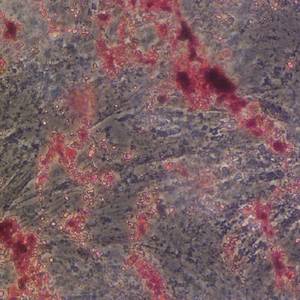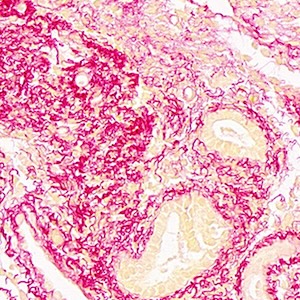Lectin-like, oxidized low-density lipoprotein receptor-1-deficient mice show resistance to age-related knee osteoarthritis

Submitted: 17 December 2016
Accepted: 8 February 2017
Published: 14 February 2017
Accepted: 8 February 2017
Abstract Views: 2466
PDF: 771
HTML: 226
HTML: 226
Publisher's note
All claims expressed in this article are solely those of the authors and do not necessarily represent those of their affiliated organizations, or those of the publisher, the editors and the reviewers. Any product that may be evaluated in this article or claim that may be made by its manufacturer is not guaranteed or endorsed by the publisher.
All claims expressed in this article are solely those of the authors and do not necessarily represent those of their affiliated organizations, or those of the publisher, the editors and the reviewers. Any product that may be evaluated in this article or claim that may be made by its manufacturer is not guaranteed or endorsed by the publisher.
Similar Articles
- Kazuhiko Hashimoto, Yutaka Oda, Koichi Nakagawa, Terumasa Ikeda, Kazuhiro Ohtani, Masao Akagi, LOX-1 deficient mice show resistance to zymosan-induced arthritis , European Journal of Histochemistry: Vol. 62 No. 1 (2018)
- Susan Brooks, Lectins as versatile tools to explore cellular glycosylation , European Journal of Histochemistry: Vol. 68 No. 1 (2024): 1954-2024: 70 Years of Histochemical Research
- W. Romero-Fernandez, D.O. Borroto-Escuela, V. Vargas-Barroso, M. Narváez, M. Di Palma, L.F. Agnati, J. Larriva Sahd, K. Fuxe, Dopamine D1 and D2 receptor immunoreactivities in the arcuate-median eminence complex and their link to the tubero-infundibular dopamine neurons , European Journal of Histochemistry: Vol. 58 No. 3 (2014)
- J.H. Song, M.Y. Lee, Y.J. Kim, S.R. Park, J. Kim, S.Y. Ryu, J.Y. Jung, Developmental immunolocalization of the Klotho protein in mouse kidney epithelial cells , European Journal of Histochemistry: Vol. 58 No. 1 (2014)
- Yuuki Maeda, Yoko Miwa, Iwao Sato, Expression of CGRP, vasculogenesis and osteogenesis associated mRNAs in the developing mouse mandible and tibia , European Journal of Histochemistry: Vol. 61 No. 1 (2017)
- Y. Liu, J. Weng, S. Huang, Y. Shen, X. Sheng, Y. Han, M. Xu, Q. Weng, Immunoreactivities of PPARγ2, leptin and leptin receptor in oviduct of Chinese brown frog during breeding period and pre-hibernation , European Journal of Histochemistry: Vol. 58 No. 3 (2014)
- Wenjing Liu, Shanshan Ming, Xiaobing Zhao, Xin Zhu, Yuxiang Gong, Developmental expression of high-mobility group box 1 (HMGB1) in the mouse cochlea , European Journal of Histochemistry: Vol. 67 No. 3 (2023)
- Simon Schöfer, Sylvia Laffer, Stefanie Kirchberger, Michael Kothmayer, Renate Löhnert, Elmar E. Ebner, Klara Weipoltshammer, Martin Distel, Oliver Pusch, Christian Schöfer, Senescence-associated ß-galactosidase staining over the lifespan differs in a short- and a long-lived fish species , European Journal of Histochemistry: Vol. 68 No. 1 (2024): 1954-2024: 70 Years of Histochemical Research
- V. Rizzatti, F. Boschi, M. Pedrotti, E. Zoico, A. Sbarbati, M. Zamboni, Lipid droplets characterization in adipocyte differentiated 3T3-L1 cells: size and optical density distribution , European Journal of Histochemistry: Vol. 57 No. 3 (2013)
- Y. Zhang, J. Wang, X. Cheng, B. Yi, X. Zhang, Q. Li, Apigenin induces dermal collagen synthesis via smad2/3 signaling pathway , European Journal of Histochemistry: Vol. 59 No. 2 (2015)
You may also start an advanced similarity search for this article.

 https://doi.org/10.4081/ejh.2017.2762
https://doi.org/10.4081/ejh.2017.2762















